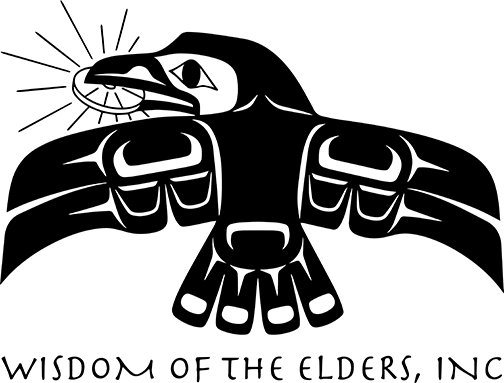
Kevin Peters, Nez Perce artist and ranger at Big Hole from 1989 to 1991. Courtesy National Park Service Big Hole NB, n.d.
Kevin Peters
with Bruce Crespin
Arlie Neskahi:
The flute makes a music of life for many indigenous peoples and tribal cultures. Traditionally, among the Nimiipuu, flutes carried songs and much more. the flute was instrumental in native courtship. a married man’s flute was decorated to display his marital status, while available men held unadorned flutes for all to see. today in artists circle, bruce crespin tells the story of how Nimiipuu flutist, artist, and museum specialist, Kevin Peters discovered the flute of his ancestors.
Bruce Crespin:
Nez Perce Kevin Peters lives and works as a curator and park interpreter in Spalding, Idaho, at the Nez Perce National Historic Park. Kevin is an artist, too, who has made paintings and also created precise replicas of nineteeth century Nimiipuu rawhide containers. Kevin and his collaborators are also devoted to reviving the traditional tribal arts of flute- playing and flute-making.
Kevin Peters:
Around the turn of the century, about a hundred years ago, a lot of men had flutes. And so we decided to create flutes again and play them. We had flute recordings. We knew of a person who had made flutes. We knew of people who had flutes. We decided it needs to be picked up again before it goes away.
Bruce Crespin:
Kevin made contacts with elders and others, seeking knowledge about making and playing indian flutes, and acquired many recordings of flute music. With much effort, he learned how to use native materials to fashion flutes.
Kevin Peters:
Anything that’s tubular and that shape and about that size they can make flutes out of. We found out gun barrels, smooth bore gun barrels had been made into flutes. The original elderberry, metip, made into flutes were the original materials used for it.
Bruce Crespin:
Kevin’s personal life, tribal culture, and museum career all collided when his father made a then startling revelation. John Minthorn, or Swan Necklace, about whom Kevin had been giving lectures.
Kevin Peters:
Well about eight years ago my father came in and sat next to this photograph while I’m ending my program and talking about this gentleman, who’d been a Nez Perce warrior, and the fact that he played flute. I ended my program and my dad said, “Well, do you know who that guy is?” And I said, “Well yeah. That’s (L), Swan Necklace.” And then my dad dropped the bomb and he said, “Well, did you know that that is your great grandfather?” So all of a sudden I have a connection with this Nez Perce warrior here who has a flute, who has a flute!
Bruce Crespin:
Flutes and flute music were used in quite personal ways. Kevin could imagine Swan Necklace courting his grandmother with its sound.
Kevin Peters:
He could court at a distance. She could literally sit between her parents inside of her lodge while he played from a distance. And if she knew the song and he knew the song, only they would be in on the idea of the courting. Their parents may not know and may wonder why the daughter sits there with a wry smile upon her face, until probably his uncle comes over and says, “Hey! The kids like each other, you know. They seem to be a good match. Let’s have a wedding trade.” And they’d have a big trade and you would have a wedding.
Bruce Crespin:
Kevin’s awareness and enthusiasm about his ancestor, the flute-playing Nez Perce warrior named john minthorn, took on new dimensions with a surprise turn of events.
Kevin Peters:
Two summers ago, I was standing at the front desk out here in uniform, being an interpretive ranger. A gentleman walks in and walks up to me and says, “How would you like to have John Minthorn’s flute back?” I about fell over, literally. I about fell over. And I said, “The one in the photo?” And he said, “Yes. The one in the photo. I know what photo you’re talking about.” I was stunned, literally stunned, shocked.
Now interestingly enough, when it came in I looked at the flute and it had a otter fur wrap on it. And I looked on the back of the wrap, and the back of the wrap was painted yellow on the original flute. And I knew one thing. Only our women in the Northwest painted their hair wraps yellow on the back of their hair wraps.
Literally what this does is it’s an item to be seen in public. You would take it out at dances and it would say, “I’m married. I’m taken.” So not only did I get my elder’s flute back. We got my female elder’s hair wrap back on the same thing. So what you see on the wall here over here, over here. This, now this is a copy of it. I can show you the original. It’s downstairs here now. You can see the swan’s head on it, brass tack for eyes.
Well, I’ll tell you what. Just for a moment I’ll play my elder’s flute that we have right here. And give you a little sound on that. So when I found this elderberry… I went looking all over for lots of elderberries to find one the size of his. This one is just about down to about a sixty-fourth of an inch or so difference, and that’s about it. So we can actually hear a little bit what this sounds like. You know, is this the sound he made? Is this the sound that my elder female heard?
(plays flute)
Bruce Crespin:
For Wisdom of the Elders, I’m Bruce Crespin.
